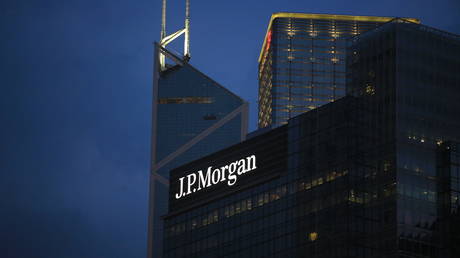Central Bank Gold-Buying Spree Expected to Continue into 2020
by Peter Schiff, Schiff Gold:

The central bank gold-buying spree is expected to continue into next year as countries continue to create a hedge against geopolitical risk and diversify their reserves away from the US dollar.
Through October of this year, central bank gold purchases have totaled 562 tons, based on data compiled by the International Monetary Fund and reported by the World Gold Council. That puts the sector on pace to roughly match last year’s total of just over 650 tons.
The World Gold Council noted that 2018 marked the highest level of annual net central bank gold purchases since the suspension of dollar convertibility into gold in 1971, and the second-highest annual total on record.
A number of analysts interviewed by Kitco News said they expect the central bank gold-buying spree to continue next year. Goldman Sachs analysts project central bank gold purchases will come in around the 650-ton mark again in 2020. Standard Chartered suggests a more modest total of 525 tons.
London-based consultancy Metals Focus director Phillip Newman called this year’s central bank gold-buying “exceptionally strong” and said he thinks that net buying will continue at a high level next year, even if it’s not as high as 2019.
Standard Chartered precious metals analyst Suki Cooper said central banks are still “firmly on the buy side,” because the yellow metal is “safe, liquid and generates returns.”
World Gold Council director of market intelligence Alistair Hewitt said there are two major factors driving central banks to buy gold – geopolitical instability and extraordinarily loose monetary policy.
Central banks are looking toward gold to balance some of that risk. We’ve also got negative rates and yields for a large number of sovereign bonds.”
In fact, negative-yielding debt topped $15 trillion globally for the first time ever in August and proceeded to climb to over $16 trillion. This pile of negatively yielding paper includes government and corporate bonds, along with some euro junk bonds. WolfStreet called it a “race to hell.” As the Financial Times put it, negative bond yields were once considered to be “economic lunacy.” Now they are economic normalcy.
There’s another significant factor driving some central banks to buy gold – a quest to diversify away from the US dollar. This is particularly true of countries like Russia and China. As Ron Paul said an episode of the Liberty Report, foreign central banks are increasingly gravitating to sound money like gold and ripping themselves away from the Fed’s dollar. Peter Schiff made a similar point earlier this year saying the US went off the gold standard in 1971, but he thinks the world is going to go back on it.
The days where the dollar is the reserve currency are numbered and we’re going back to basics. You know, everything old is new again. Gold was money in the past and it will be money again in the future, and central banks that are smart enough to read that writing on the wall are increasing their gold reserves now.”
There is a good reason for countries like Russia and China to want to de-dollarize. The US has been known to weaponize the greenback and used it as a foreign policy tool. In 2014 and 2015, it blocked several Russian banks from the dollar-denominated SWIFT payment system as relations between the two countries deteriorated. In the fall of 2016, the US threatened to lock China out of the dollar system if it didn’t follow UN sanctions on North Korea.
During an appeared on RT Schiff said the collapse of the dollar is inevitable and the US is speeding up the process of the dollar’s demise.
The sanctions that we have been imposing around the world, this is simply giving the world yet another reason to look for an alternative to the US dollar, which they should have been looking for a long time ago. But now, by flexing muscle we really shouldn’t be flexing, we’re in effect biting the hands that have been feeding us, and now they’re questioning whether or not they should continue to do that. And so we’ve accelerated the process of the dollar’s demise by antagonizing so many of the nations around the world.
But Russia and China aren’t the only countries buying gold. Several Eastern European countries, including Poland and Serbia, have joined the buying-spree. And there is some speculation that one or more Western European banks could enter the market next year. A Commerzbank analyst said the Dutch central bank is a strong candidate. Earlier this fall, the DNB published what Commerzbank called a “remarkable” statement about the role of gold on its website. It called gold an “anchor of trust.”
Loading...



